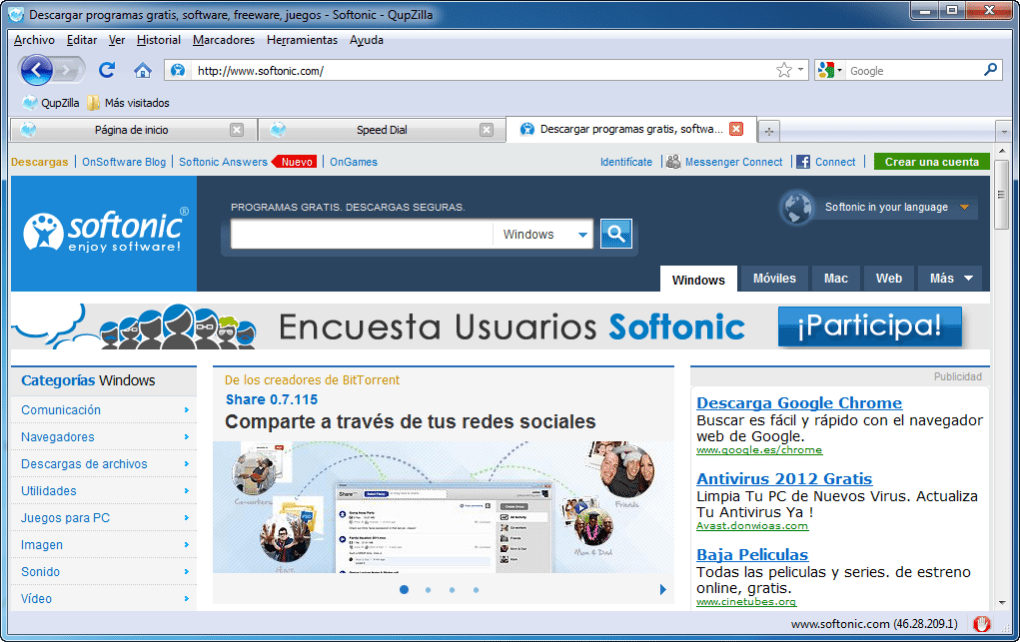
You’ve probably heard of this one already. To launch Luakit navigate to LXTerminal and type a command such as: luakit Ĭhromium is probably one of the better known alternatives
#QUPZILLA OR MIDORI INSTALL#
To download and install, open LXTerminal and enter the following command: sudo apt-get install luakit That might determine as to whether it is the browser for you, or not. Luakit is an extremely lightweight browser, based on webkit and GTK+ and, as it says on the Luakit website, Luakit is “… primarily targeted at power users, developers and any people with too much time on their hands who want to have fine-grained control over their web browsers behaviour and interface.” Luakit is really intended for developers or power-users Pressing the Right Arrow or Return has the action of selecting a link.īeing text-based, your browsing experience will be somewhat retro-classic.

Pressing the Spacebar allows you to move down a page at a time. To navigate, use the arrows up and down arrows to move through the hyperlinks. To use it enter lynx followed by the URL that you wish to view. To download and install, open LXTerminal and enter the following command: Lynx is a text-based web browser which allows you to browse the web from the CLI (Command Line Interface) of LXTerminal Lynx is a terminal-based browser that can only display text To use Dillo, open the Programs menu and click Dillo To use Netsurf, open the Programs menu and click Netsurfĭillo is not particularly suited to many modern webpagesĭillo is designed for older and slower computers (Raspberry Pi fits that latter criterion).ĭillo does not support JavaScript and, as such, is unable to render many websites that use complex or sophisticated JavaScript in order to function. This means that it is faster though this is as the expense of the functionality of some websites.
#QUPZILLA OR MIDORI MAC#
Many websites will appear quite similar to how they look on a Mac (or PC), but it should be noted that Netsurf lacks support for JavaScript. It’s now available for a number of operating systems–including OS X and Windows–as well as Raspberry Pi Raspian. Netsurf is another lightweight browser that started life with RISC OS some twelve years ago. Netsurf may not render some modern webpages correctly Tip: Whilst this may improve browsing speeds, it does come at the cost of browsing experience.

If you have installed Raspian (most likely from installing NOOBS) you will be using Midori, but you will notice it can be slow. SeaMonkey and Palemoon are probably the best for close to handling the modern web.Tip: Pronounced Mee-Doh-Ree in English, the name comes from the Japanese word 緑 (みどり) for the colour green. They all work in 32-bit and have varying degrees of usefulness. I have also used links2, Midori (both in Q4OS repo), Netsurf, and otter-browser (both not in Q4OS repos). You will need to work at changing the configuration to make it work best in 32-bit, especially with low memory. But it also is an old version.įirefox-ESR will probably work but it is pretty memory hungry.

Palemoon-nonsse is supported here with a special install routine. The last SeaMonkey I can use on non-SSE2 machines is version 2.49.4. But depending on your 32-bit system you may not be able to use anything that requires SSE2. SeaMonkey can be downloaded and placed in any folder of your choice, it does not require an "installation". SlimJet can be downloaded and installed from a deb file. Only FF-ESR and Palemoon-nonsse are in the Q4OS repos. For 32-bit I have had success with using Firefox-ESR, Palemoon-nonsse, SlimJet, and SeaMonkey.


 0 kommentar(er)
0 kommentar(er)
